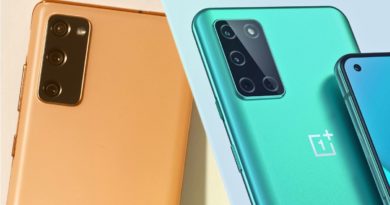Best Metro by T-Mobile phones
The beauty of Metro by T-Mobile is that its plans are on average quite inexpensive compared to the competition, but you don’t sacrifice much in spite of that. In fact, our LTE network testing has confirmed as much.
Metro’s performance is comparable to parent network T-Mobile’s, making Metro the best performing prepaid carrier we tested. And the fact that you can get a lot of data for just $40 a month (with taxes and fees included) makes Metro our favorite discount carrier, too.
Many of the same phones offered by the likes of T-Mobile, AT&T and Verizon are available through the prepaid carrier. And some of those happen to be the best phones you can buy right now, like the iPhone 11, iPhone 11 Pro and Samsung Galaxy S20. You can also expect top upcoming models like the iPhone 12 to be offered eventually as well.
Metro customers have the freedom to go with low-cost handsets or flagship devices, and you can even bring your own compatible phone so long as you don’t mind paying out of pocket without carrier subsidies. Here are the best phones Metro offers right now.
What are the best Metro by T-Mobile phones?
Many of the devices on our list of the best Metro by T-Mobile phones may look familiar because they’re also some of the best phones out there, period.
That includes everything from high-end models, like the remarkable iPhone 11 Pro and new Samsung Galaxy A51 5G, to more affordable handsets, like the long-lasting Moto G Stylus and the giant-killing second-generation iPhone SE.
The new iPhone SE is indeed our top pick if you’re looking for a new high-performance phone from the discount carrier, but don’t mind sacrificing a massive display and an OLED display for a more reasonable price.
On the other end of the spectrum is one of the priciest devices Metro offers — the Samsung Galaxy S20 — which bears the distinction of being one of the only phones the carrier currently sells capable of connecting to next-generation networks. The newly-unveiled Samsung Galaxy Note 20 and Galaxy Note 20 Ultra are not yet available from Metro, though the old Note 10 Plus 5G was offered through the discount carrier until recently, so we expect at least one of Samsung’s new phablets to make their way to T-Mobile’s discount brand in due time.
Of course, you don’t have to purchase a phone from Metro at all if you don’t wish to; being a GSM-based carrier on T-Mobile’s network, Metro supports unlocked phones from every manufacturer, allowing you to bring your own device if you like. However, Metro also offers opportunities to save on certain models in its store if you switch from another carrier and port your number over in the process — so it’s worth it to give the following phones a look.
The best Metro by T-Mobile phones
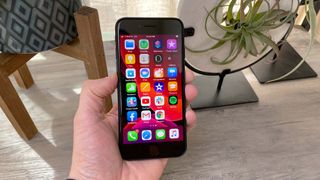
The new iPhone SE for 2020 replaces the iPhone 8 as the smallest, cheapest iPhone Apple offers, and it packs stellar performance for a very easy-to-stomach $399 price. Buyers receive an A13 Bionic CPU — the very same one inside the iPhone 11 and iPhone 11 Pro — as well as an updated 12-megapixel camera system that benefits from the company’s latest computational photography tricks. (Well, except for Night Mode.)
The iPhone SE surely doesn’t have the best battery life of any iPhone, given its relatively tiny battery. You’ll probably want to spend an extra $50 and upgrade to 128GB of storage as well, if you can. But for the price, the SE’s premium features — like wireless charging and water resistance — make it well worth a look for Metro by T-Mobile customers.
As of this writing, Metro is offering the 64GB iPhone SE for just $99 for new customers switching from other carriers. The discount will be distributed in the form of rebates, and after 6 months of service and payment with auto pay enabled on the account.
Read our full iPhone SE 2020 review.
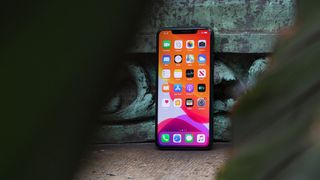
From the outside, the iPhone 11 Pro and iPhone 11 Pro Max don’t look terribly different from their predecessors, aside from their triple rear camera stack and new matte finish. But Apple’s 5.8- and 6.5-inch flagships pack more power and better battery life than ever before, as well as computational photography features that enable these handsets to take the finest photos of any phones on the market today.
Apple’s Night Mode captures stunning images in the dark without over-brightening moonlit skies, while the new Deep Fusion mode pulls out exceptional detail in medium-light scenarios. Especially creative photographers will also love the new ultrawide lens, which makes it easy to zoom out in tight spots.
Read our full iPhone 11 Pro and iPhone 11 Pro Max reviews.
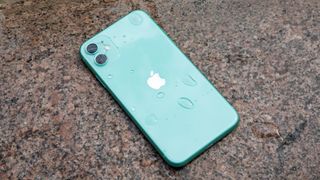
Apple should be commended for building many of the iPhone 11 Pro’s headline features into the 6.1-inch iPhone 11, one of the best Metro by T-Mobile phones the carrier offers. This $699 model packs the same A13 Bionic chipset, two of the same cameras on the back (you lose out on the optically zooming telephoto, unfortunately) and the finest battery life of the bunch, partly due to its rather low-resolution (though still extremely bright) Liquid Retina LCD display.
iPhone 11 buyers still get Face ID authentication for their troubles, as well as support for wireless charging and IP68 water resistance. It’s really all the iPhone anyone needs at a great price.
Read our full iPhone 11 review.
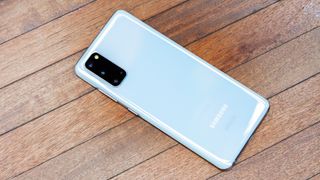
Up until recently, the Samsung Galaxy Note 10 5G was still the only 5G phone Metro offered. But now it’s been swapped out for the newer, more powerful 6.2-inch Samsung Galaxy S20, which has an improved 5G modem for better service and faster data speeds. And it’s cheaper than the Note 10 Plus 5G was at well, at $999 compared to that phablet’s original $1,299 price.
There are other reasons to consider the Galaxy S20, though. This handset has a captivating 120Hz display, offering one of the smoothest user experiences you’ll see on a flagship phone this year. It also has three cameras on the back, including a 64-megapixel telephoto lens with 3x lossless zoom that can even capture 8K video.
We wish the Galaxy S20’s battery life was a bit longer, but if you want one of the most powerful flagship phones out there today, and if you have your heart set on buying something with 5G capability, the Galaxy S20 is Metro’s best option right now.
Read our full Samsung Galaxy S20 review.
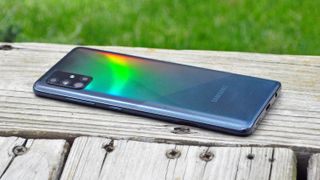
Metro has recently received the Samsung Galaxy A51 in its repertoire, and what makes its version of the A51 particularly interesting is that it can connect to 5G networks. We haven’t reviewed the Galaxy A51 5G, though we have extensively used its LTE counterpart, and found the device to be a formidable budget phone with some drawbacks.
The Galaxy A51 is a sleek enough device with a dazzling 6.5-inch AMOLED display. However, its quad-camera system disappoints compared to the single-lens modules in the Google Pixel 4a and iPhone SE, both of which cost far less than the A51 5G (though Google’s phone is not sold through Metro). Performance on our A51 LTE unit was underwhelming as well, though the 5G variant has a different chipset and more RAM, making it slightly more powerful overall. If you’re after a 5G-compatible handset but don’t want to spend top dollar on the Galaxy S20, the A51 5G is a respectable alternative — so long as you’re aware of the tradeoffs you’ll make.
Read our full Samsung Galaxy A51 review.
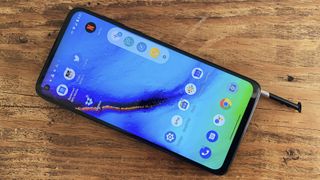
The Moto G Stylus isn’t quite our favorite budget Android phone — that honor actually goes to the Moto G Power, which has a larger battery and, thus, lasts longer on a charge. However, the Moto G Stylus’ longevity still isn’t anything to sneeze at. At 12 hours and 13 minutes, the Moto G Stylus still ranks on our list of the best phone battery life.
But, of course, a phone like the Moto G Stylus is about more than battery life. The Snapdragon 665 CPU inside this $299 handset offers solid overall performance. And with 128GB of built-in storage, you won’t need to spring for a microSD card — though you certainly can put one in the phone if you wish. Rounding out the feature set is, of course, that handy stylus, which assist with productivity and note taking, and separates Moto’s handset from other similarly-price models.
Right now, Metro is selling the Moto G Stylus for just $239. That’s $60 off the normal price of the device unlocked, meaning you can expect significant savings by choosing to go with the discount prepaid network.
Read our full Moto G Stylus review.
How to choose the best Metro by T-Mobile phone for you
While we regularly update our best Metro by T-Mobile phones page with the carrier’s most compelling deals, you’ll want to check the network’s smartphones store page for the latest and greatest offers — especially if you’re interested in switching from a rival carrier. Metro, like all wireless providers, offers the best discounts for new customers who bring their numbers over with them.
Otherwise, Metro offers a complete range of devices across all prices, so prospective buyers should consider those most critical smartphone features — like battery life, performance and camera quality — when choosing a new handset. Cheaper models, like the Galaxy A20 and Moto G7 Power, tend to prioritize battery life above those other factors. In other words, if longevity on a charge is all you need, you could be in an ideal position to save.
However, if premium specs, design and a great camera are really important to you, it’s a better idea to look to one of the iPhones or Samsung Galaxy S devices on this list. They are more expensive, but their capabilities far outshine those of the less-expensive models Metro offers. They’ll also likely last you a few more years and are sure to be supported with more frequent software updates going forward.
How we test smartphones
Smartphones that make any of our best phones lists need to excel on several tests that we run on every handset. We perform some of these tests in our labs and some in the real world.
When it comes to performance, we rely on such synthetic benchmarks as Geekbench 5 and GFXBench to measure graphics performance. These tests allow us to compare performance across iPhones and Android devices. We also run a real-world video transcoding test on each phone using the Adobe Premiere Rush app and time the result.
To measure the quality of a phone’s display, we perform lab tests to determine the brightness of the panel (in nits), as well as how colorful each screen is (DCI-P3 color gamut). In these cases, higher numbers are better. We also measure color accuracy of each panel with a Delta-E rating, where lower numbers are better and score of 0 is perfect.
One of the most important tests we run is the Tom’s Guide battery test. We run a web surfing test over 5G or 4G at 150 nits of screen brightness until the battery gives out. In general, a phone that lasts 10 hours or more is good, and anything above 11 hours makes our list of the best phone battery life.
Last but not least, we take the best phones out in the field to take photos outdoors, indoors and at night in low light to see how they perform versus their closest competitors. We take shots of landscapes, food, portraits and more, and also allow you to be the judge with side-by-side comparisons in our reviews.


